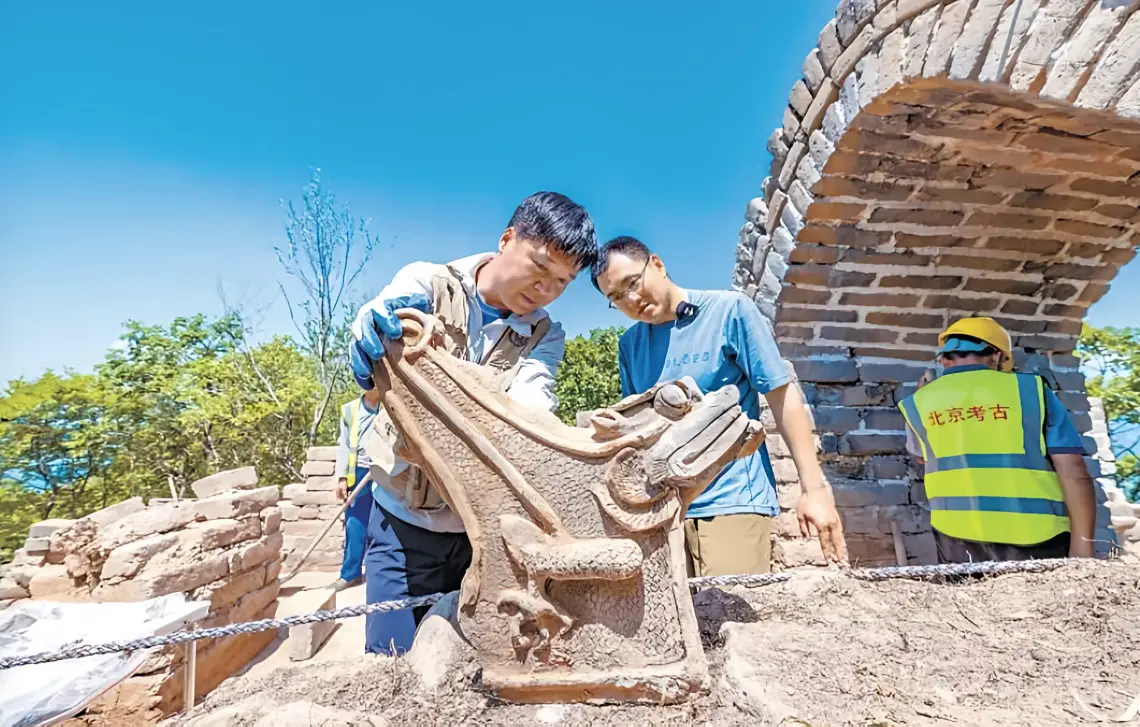Archaeologists conducting restoration works on the Jiankou section of the Great Wall of China have discovered an ornate dragon sculpture.
The Great Wall of China refers to a series of fortifications that were built across the historical northern borders of ancient Chinese states and Imperial China.
The wall served multiple purposes: it defended against nomadic invaders from the Eurasian Steppe, provided border control for goods along the Silk Road, and regulated immigration and emigration.
The Jiankou section of the wall, located 100 km’s north of Beijing, runs along a series of jagged mountains for a length of 20 km’s. This section was built in the 1500s and early 1600s during the Ming Dynasty, where it has been left relatively untouched and reclaimed by nature over the centuries.
The discovery was made by members of the Beijing Institute of Archaeology, who were exploring a collapsed defensive tower (tower No. 12) in a dense forested area on a mountain ridge.
While excavating a corridor within the tower’s interior, archaeologists unexpectedly came across an architectural element with carved scales. As they removed additional layers of soil, a tail emerged, followed by claws, and eventually the head of a carved dragon sculpture was revealed.
Shang Heng from the Beijing Institute of Archaeology, said: “You can see that the scales on its body are very delicate, and the details of the mouth, eyes, nose, etc. are all carved. It can be imagined that in the Ming Dynasty, the enemy tower No. 120 was very tall and magnificent, and the architectural details were also very exquisite.”
According to the archaeologists, the sculpture would originally have been positioned on the roof of the tower, indicating that the defender of the tower held a high status in the Ming Imperial army.
Excavations also uncovered a palm-sized black and red “iron rod” with a semicircular ring, identified as the sub-gun of a Portuguese lance first introduced from Europe during the Jiajing period of the Ming Dynasty.
Header Image Credit : Pan Zhiwang
Sources : The Institute of Archaeology CASS





